Semiconductor based Video Encoder
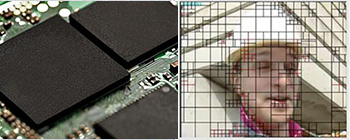 HEVC is the up-to-date video compression standard, especially targeted for HD/UHD video contents. HEVC can achieve much higher performance than its previous generation standard AVC, yet at the cost of much higher computational complexity. In order to make sure a hardware based and HEVC compliant encoder capable of running at real time while in an economical fashion, certain encoding
tools are needed to be leveraged to fit with the hardware pipeline philosophy. In the same cost scale, the hardware based on our encoding algorithm can
achieve higher Rate-Distortion performance than competitors in different GOP configurations.
HEVC is the up-to-date video compression standard, especially targeted for HD/UHD video contents. HEVC can achieve much higher performance than its previous generation standard AVC, yet at the cost of much higher computational complexity. In order to make sure a hardware based and HEVC compliant encoder capable of running at real time while in an economical fashion, certain encoding
tools are needed to be leveraged to fit with the hardware pipeline philosophy. In the same cost scale, the hardware based on our encoding algorithm can
achieve higher Rate-Distortion performance than competitors in different GOP configurations.
Video Retargeting
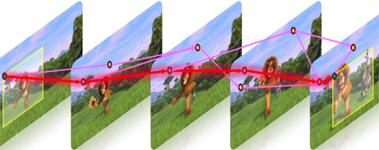 Video retargeting is a video processing technology that adjusts the original video content into various devices with different display resolution.
It is widely used in universal media playback, video transcoding and any area that would exploit the adaptibility. The challenge lies in how to still perserve the visual
consistency of the retargeted video while making it track the most distinguishing content of the original effectively. In this project, we designed a video retargeting system addresses
the temporal consistency issue holistically and is still capable of
preserving high degree of visual interestingness. The experiment results indicate that our proposed video retargeting system outperformed the
conventional methods.
Video retargeting is a video processing technology that adjusts the original video content into various devices with different display resolution.
It is widely used in universal media playback, video transcoding and any area that would exploit the adaptibility. The challenge lies in how to still perserve the visual
consistency of the retargeted video while making it track the most distinguishing content of the original effectively. In this project, we designed a video retargeting system addresses
the temporal consistency issue holistically and is still capable of
preserving high degree of visual interestingness. The experiment results indicate that our proposed video retargeting system outperformed the
conventional methods.
Video Transrating
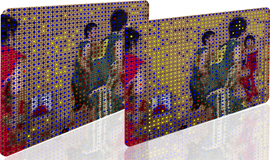 Channel bandwidth reduction is a common challenge for video streaming applications. In response to the reduced bandwidth, a transcoder/transrator is required in the streaming system to adapt the bitrate of the encoded bitstream to channel conditions. This project aims at a quick and light-weighted transrator that could support real time transcoding of H.264 bitstreams. The proposed transrator can reduce the transrating time by 50% at a modest cost of 0.2 dB reduction in PSNR on average.
Channel bandwidth reduction is a common challenge for video streaming applications. In response to the reduced bandwidth, a transcoder/transrator is required in the streaming system to adapt the bitrate of the encoded bitstream to channel conditions. This project aims at a quick and light-weighted transrator that could support real time transcoding of H.264 bitstreams. The proposed transrator can reduce the transrating time by 50% at a modest cost of 0.2 dB reduction in PSNR on average.Video Summarization
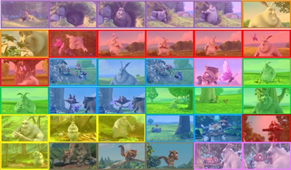 Every day we encounter so much video data, but most of the time we are only interested in certain parts of it, not all. Unfortunately, we never actually know where those parts are in the video until we finish watching it. How exhausting! What if you could create a video summary, like a news digest? In this project, we proposed a video summarization method that allows viewers to understand the summary and recover the original plot correctly. Experiments show that our proposed method outperforms the traditional scalable approach by 10% in terms of summary informativeness and enjoyability.
Every day we encounter so much video data, but most of the time we are only interested in certain parts of it, not all. Unfortunately, we never actually know where those parts are in the video until we finish watching it. How exhausting! What if you could create a video summary, like a news digest? In this project, we proposed a video summarization method that allows viewers to understand the summary and recover the original plot correctly. Experiments show that our proposed method outperforms the traditional scalable approach by 10% in terms of summary informativeness and enjoyability.
Video Streaming Adaptive to Viewing Conditions
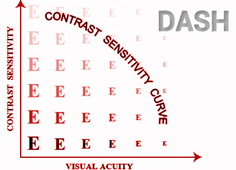 While Dynamic Adaptive Streaming over HTTP (DASH) is a fast-growing trend to deliver broadband videos, we extend its adaptivity with a new dimension --- viewing conditions. Due to human visual acuity limitations, viewers can only perceive certain frequency spectrums depending on the viewing distance and angle. By encoding the video content into multiple presentations with various frequency ranges, the streaming client is able to choose the most efficient version accordingly, enhancing R-D performance significantly.
While Dynamic Adaptive Streaming over HTTP (DASH) is a fast-growing trend to deliver broadband videos, we extend its adaptivity with a new dimension --- viewing conditions. Due to human visual acuity limitations, viewers can only perceive certain frequency spectrums depending on the viewing distance and angle. By encoding the video content into multiple presentations with various frequency ranges, the streaming client is able to choose the most efficient version accordingly, enhancing R-D performance significantly.
Perceptual Quality Measurement of Video with Packet Loss
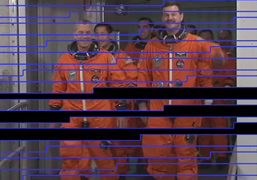 While streamed video often suffers from packet loss during the transmission. How exactly do these lost packets introduce artifact and degrade the percepual quality of the decoded video? This research project seeks to a computational model in the decoded image domain to measure the glittering artifact introduced by inperfect error concealment.
While streamed video often suffers from packet loss during the transmission. How exactly do these lost packets introduce artifact and degrade the percepual quality of the decoded video? This research project seeks to a computational model in the decoded image domain to measure the glittering artifact introduced by inperfect error concealment.
Rotary motion degraded image deblurring
 In the situation that the scence is rotating in high speed when its image is captured, there are rotary degradations introduced. We proposed a deblurring method dedicated to remove the rotary blur from a single image and also to recognize the rotary motion parameters. The right snapshot is a comparsion of the blurred image and its deblurring result.
In the situation that the scence is rotating in high speed when its image is captured, there are rotary degradations introduced. We proposed a deblurring method dedicated to remove the rotary blur from a single image and also to recognize the rotary motion parameters. The right snapshot is a comparsion of the blurred image and its deblurring result.